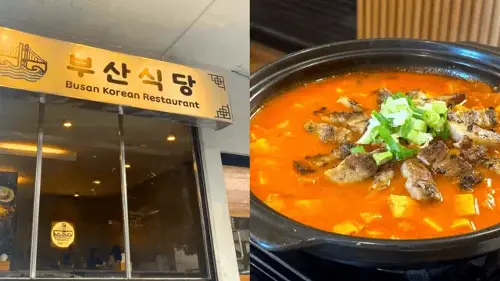
MANILA, Philippines — In the backstreets of Katipunan is a small Korean campus canteen called Busan — a casual, no-frills, but well-designed eatery owned by young entrepreneur siblings from South Korea’s second most populous city after Seoul.
It just made sense for Busan’s owners, who studied high school and college in Manila, to open a mom-and-pop Korean restaurant of their favorite childhood dishes at reasonable prices. Korean cuisine has found its place in the hearts (and stomachs) of many Filipinos, so it created quite the buzz among students and neighborhood locals when Busan opened in mid-2024.
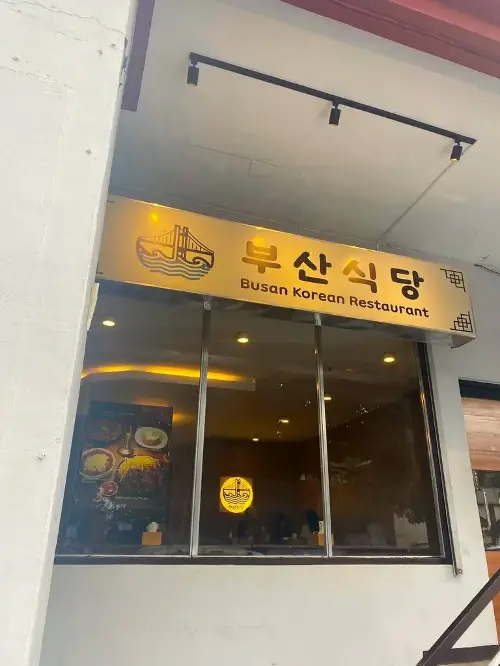
What sets Busan apart? It’s the youthful yet comforting take on Korean cuisine, the owner told Rappler, and the advantage that there aren’t many Korean restaurants within a five-kilometer radius.
“Most authentic Korean restaurants here are run by older Koreans in their 40s to 50s who cook in a more traditional style,” the owner said. “Their flavor of cooking is more older and traditional, and it might not really appeal to the younger generations as much. I think our food is more modern. Busan aims to fill that niche.”
The young owners have poured their heart, money, and soul into every aspect of the business, offering Filipinos a taste of Busan — often overlooked compared to Seoul’s trendy flavors — with dishes that reflect the port city’s depth, warmth, and simplicity.
A year in the making
The journey to opening Busan wasn’t a spontaneous decision. It was a well-thought-out process that took a year of research, development, and countless trips back to Korea, said the owner.
“Busan’s hardworking staff were trained for months to replicate authentic Korean flavors, and the management team aspired to bring both Korean culture and genuine flavors to the Philippines,” he said. They also decided to localize some flavors to appeal to Filipino consumers.
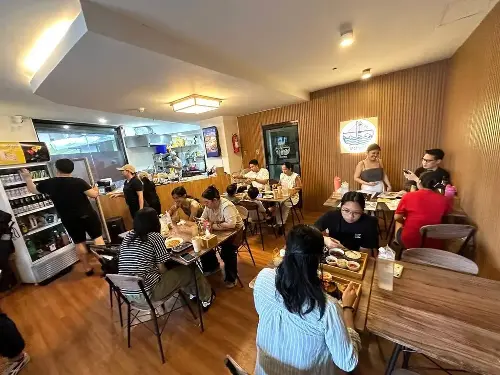
From the get-go, the siblings behind Busan knew exactly who they wanted to cater to — female customers.
“I think the dining culture between male and female is very different. If there were a group of guys going out to eat, we would consider practicality, and the portion size, and the lot of different factors. Meaning, I’ll just have to do a restaurant with big portions, average pricing, and food,” he said.
“But for a small-sized restaurant, that’s a harder market. Females are the ones who will post on Instagram!” he added. Females appreciate smaller portions, thoughtful plating, and the inclusion of elements like cheese. And, the strategy seems to be working.
Today, Busan is frequented by students and groups of friends. About 70% to 80% of their customers are women.
“If there’s a guy in the group, it’s usually a date,” the owner joked.
The female target market inspired Busan’s modern interiors, the type of menu they carry, the drinks, and even the way the lunch promo is plated in a wooden, more minimalistic tray.
Busan’s recipes are solely Korean — some from their own household and others from restaurants that do well in Korea, he said.
“We take note from a lot of their recipes because in the modern day we live in, a lot of the recipes are often disclosed. It’s not really a private thing anymore,” he said.
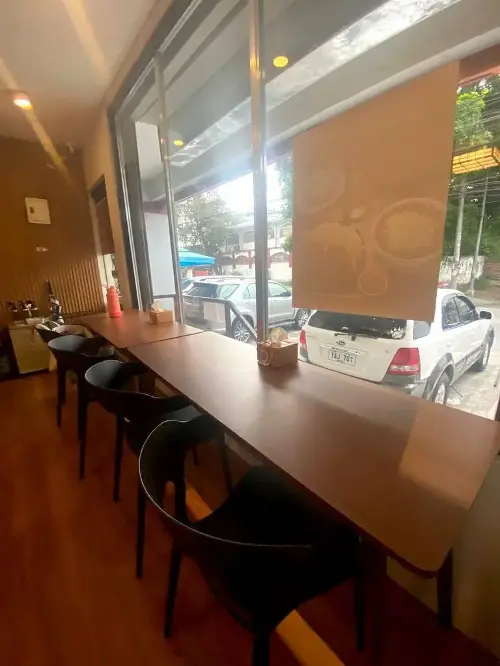
“Most restaurants in Korea have a very high standard of taste, and it’s easy to replicate it actually. So it really comes down to marketing and branding rather than the food itself these days,” he added.
The Busan touch
Almost every dish — from the kimchi jjigae to tteokbokki — is homemade to reflect the flavors of Busan; modern yet still rooted in tradition.
“In Korea, ingredients have become simplified by companies, so you don’t need to broth bones anymore, just instant packs,” he said. That said, they still try to add a unique touch.
“The base of the soup comes from roasting samgyupsal, allowing the oil and fat to render out. We roast it with onions, green onions, and garlic from scratch, then use that to make the soup,” he said, adding that this results in a bolder and deeper flavor. He shared that many older Koreans skip this step — they usually just boil everything because they prefer a cleaner, less oily flavor.

“This type of food is something you can’t try in the Philippines,” he said.
Busan keeps it simple with just a handful of tables and a focused menu that sticks to crowd favorites among the younger generation. Riding the wave of the Korean fried chicken craze, it’s no surprise that Busan offers its own take on this beloved dish — and the Soy Garlic Fried Chicken did not disappoint.
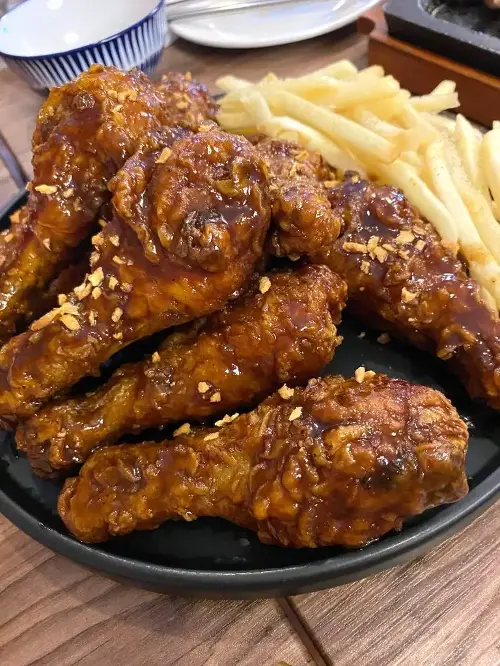
Each piece — crispy on the outside and moist on the inside — was generously coated in a sweet-savory glaze. The balance of soy and garlic delivered umami goodness, while the chicken miraculously held its crispiness despite being drenched in sauce.
The Roasted Samgyup Kimchi Jjigae Stew was comforting; it had all the flavors of a good kimchi stew — spicy, sour, and savory.

The roasted samgyupsal on top added a smoky richness, while the soft tofu and crisp vegetables kept it light. It’s perfect for sharing (or not)!

My favorite would have to be the Roasted Samgyup Soy Bean Soup. This stew was unlike any other I’ve tried — it had a deep, earthy, and umami-packed flavor that lingered long after the first spoonful.
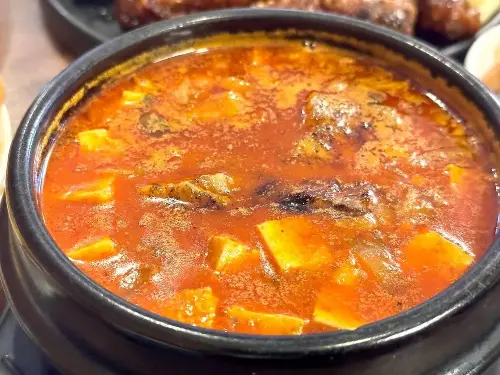
The soybeans are cooked for hours, bringing out their natural richness and aroma, and the result is a comforting, almost nutty broth that feels like a warm hug on a rainy day — a hearty yet humble labor of love.

To balance all the bold flavors, we paired the dishes with Busan’s Mozzarella Overload Kimchi Fried Rice. The kimchi’s spiciness was subtler than expected, but the owner explained that they adjusted the recipe to incorporate more gooey cheese, based on customer feedback — something they take very seriously.

This was also evident in the Mozzarella Overload Tteokbokki — a creamy, cheesy delight with chewy rice cakes in a viscous, spicy-sweet sauce.
Overall, it was a hearty meal, incorporating all the best elements of Korean cuisine — heat, slight sweetness, richness, umami, and comfort, while highlighting Busan’s expertise in hearty stews and deeper, richer, and roasted elements.
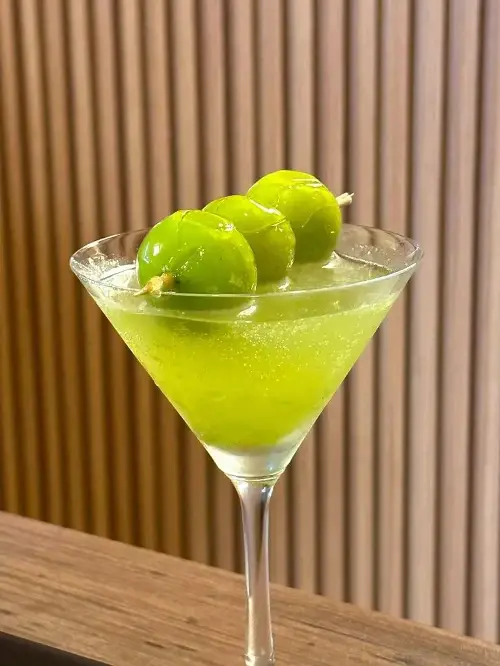
The hand-crafted cocktails are also the pride of Busan — the Shine Muscat Tanghulu Drink is not just a pretty and playful drink; it’s light, fruity, sweet, and refreshing. You can barely taste the alcohol (which may catch you off-guard after one too many drinks, so be careful)!
Keeping it real
Busan’s authenticity extends to their ingredients. Almost everything — from the gochujang, tofu, beef broth, to the rice cakes and fish cakes — is imported directly from Korea. “The only things sourced locally are the pork and fresh vegetables,” the owner shared.
Yet, Busan manages to keep its prices accessible by focusing on the right suppliers and negotiating prices, without compromising on the ingredients’ quality. They continuously look for ways to keep costs down for their student-centric clientele.
“For example, our pork samgyupsal is high-grade — it retails for about P480 per kilo in the consumer market. To compare, regular pork belly at SM might be around P300 per kilo, but even their premium cuts are priced similarly at P470-P480. Achieving this involves a lot of negotiation and consistently searching for better suppliers,” he shared.
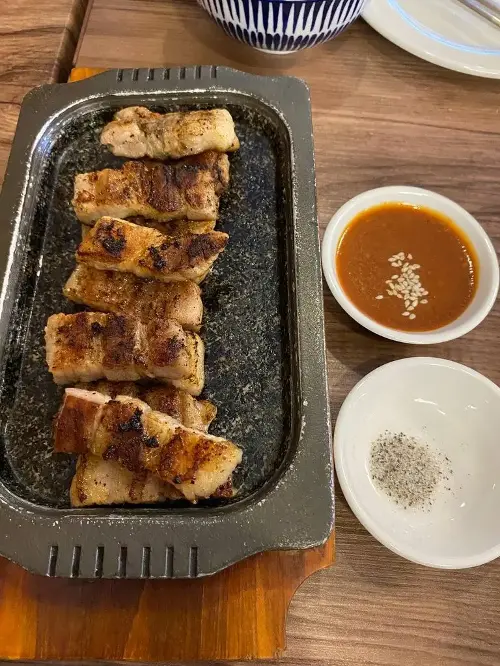
“Since most ingredients for Korean food are imported from Korean companies, there’s already a markup compared to more locally sourced cuisines like Filipino or Japanese food. That’s why we’re always on the lookout for new suppliers to help lower costs while ensuring we never compromise on quality.”
Another challenge faced by the young owners when Busan first opened? They didn’t anticipate such a high volume of customers!
“We only had a home-grade exhaust system, and it got so smoky that some people cried while eating! We’ve since fixed that,” the owner shared.
Managing a restaurant has also been a challenge for the siblings. “It’s okay — it’s a small store. You just sleep less, no big deal,” he said.
Despite the laid-back attitude, the hard work and hands-on approach is clear. “There’s no clear division of roles. We do everything — logistics, marketing, HR, operations, interacting with guests. It’s common for small businesses.” And for them, the restaurant isn’t just a business — it’s a piece of home.
The owner shared that luck also plays a big role in business. “Even if you get everything right — branding, food, customer service, quality control, location — sometimes, it still comes down to luck. Without luck, even the best efforts might not work out,” he said.
A lot of it is about timing and connections, he added, and the right people dining there first — people who genuinely love Korean food. “They appreciated what we offered and shared it with their friends. That kind of word-of-mouth support is one of the most powerful forms of marketing,” he said.
And the dream doesn’t stop there — Busan’s Katipunan spot hopefully won’t be the first and last. “To sustain life, we’ll need more branches,” the owner said, manifesting for a bigger location in the coming years.
“Providing the best service and food to our customers is both a challenge and a joy. We strive to ensure that every dish served and every customer experience is delivered in the best way possible,” Busan’s owner said.
“I want our guests to eat at Busan and feel like they don’t need to travel to Korea to enjoy authentic, trendy Korean food,” he added. Amazed at how Filipinos have quickly embraced Korean food and culture, Busan’s young owners are committed to continue being part of that story. – Rappler.com
Busan is open Mondays to Saturdays from 11 am to 9 pm along F. Dela Rosa, Corner Esteban Abada St, Quezon City.
